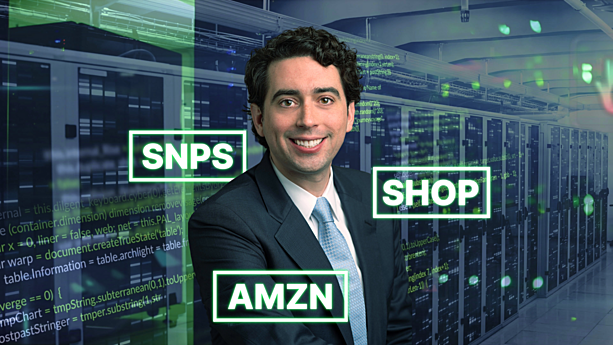
The first half of 2025 has proven to be both a challenging and enlightening period for tech investors. The era has underscored the critical role of technology, particularly artificial intelligence (AI), in the global economy. Despite the uncertainties sparked by geopolitical shifts such as “Liberation Day” and the initial reactions to DeepSeek, spending in the AI sector has remained robust. A recent agreement between the US and UAE to supply 500,000 Nvidia chips annually to the Gulf region exemplifies AI’s global significance, positioning the Gulf as a burgeoning AI hub and reinforcing US dominance in the field.
Dominic Rizzo, Global Technology Portfolio Manager at T. Rowe Price, finds the resurgence of big tech unsurprising. By June 30, the S&P 500 had reached record highs, despite a 16% tech correction in April. Rizzo attributes this resilience to the imperative nature of AI leadership for American corporations, which has kept spending steady amidst evolving geopolitical and macroeconomic challenges.
“AI leadership is imperative for American corporations, hence spending remained remarkably resilient, despite rapidly evolving geopolitical and macroeconomic challenges,” Rizzo states.
Key Events Shaping Big Tech in 2025
Rizzo identifies three pivotal events in 2025 that have influenced the trajectory of big tech and AI. The first is US President Trump’s “Liberation Day” on April 2, which had widespread global implications. Rizzo highlights the significant supply chain transitions that ensued, particularly affecting the tech industry.
“Tech companies responded with unprecedented urgency, restructuring supply chains from Asia towards the Americas, particularly for semiconductors,” Rizzo explains.
This event contributed to the 16% tech correction, during which Rizzo strategically adjusted his portfolio, reducing exposure to high-multiple US software positions like ServiceNow and reallocating capital into quality cyclicals such as ASML and Entegris.
The Impact of DeepSeek
The second major event was the introduction of DeepSeek, which notably influenced Nvidia’s stock prices. Rizzo describes initial reactions as “almost comical,” noting that the development has ultimately been beneficial for AI.
“Its low-cost LLM reset model economics, but this merely accelerated AI consumption. With 90% lower inference costs, every workflow becomes agentic-ready, driving chip demand higher,” Rizzo elaborates.
Rizzo maintains strong confidence in Nvidia, projecting semiconductor chip demand to rise significantly, from $45 billion in AI chip spending in 2023 to $500 billion by 2028.
The US-UAE GPU Deal
While perhaps less publicized, the US-UAE GPU deal is another significant development. Rizzo views it as a strategic move to sustain US dominance in AI and establish the Gulf as an AI hub.
Navigating Uncertainty: Investment Strategies
In navigating the complexities of tech investing, Rizzo emphasizes the importance of a disciplined approach. Drawing parallels to the dotcom bubble, he stresses the necessity of a reflexive framework that considers fundamentals, valuation, and market psychology.
“It’s important to have a reflexive framework to understand the interplay between fundamentals, valuation and market psychology,” Rizzo advises.
Rizzo’s strategy involves identifying companies with improving fundamentals and potential growth catalysts, particularly those benefiting from AI-driven operational leverage. This approach proved crucial during market volatility, such as the April correction, where he reallocated capital from higher valuation positions to those with stronger fundamentals.
The AI Investment Cycle and Emerging Themes
Currently, the AI investment cycle is in its second phase, characterized by an “infrastructure land-grab with debt financing extending beyond equity.” Rizzo acknowledges the potential for a bubble but argues that the infrastructure generates immediate returns on investment.
He identifies several areas of interest, including computing, chip design, and cloud services. Rizzo is particularly intrigued by generative AI and agentic workflows, as well as advancements in cybersecurity.
“Phase three of the cycle will start when inference costs fall another 50% – which could happen by late 2026. Until then, we will likely stay overweight the picks-and-shovels,” Rizzo predicts.
Other Emerging Tech Themes
Beyond AI, Rizzo is excited about developments in power efficiency, quick-commerce, and stablecoins in the cryptocurrency space. He highlights companies like Infineon for their advancements in wide-bandgap semiconductors and Alibaba for AI-enabled logistics in retail.
“While these won’t replace card networks, they provide alternative rails for currency translation,” Rizzo notes regarding stablecoins.
Looking Ahead: Stocks to Watch
While investors are familiar with major players like Nvidia and AMD, Rizzo points to lesser-known opportunities. He highlights Synopsys for its AI-driven design tools and Shopify for its “AI-native” checkout workflows, both of which present potential for significant growth.
As AI continues to integrate into various sectors, its importance cannot be overstated. Investors are advised to approach the space with caution, learning from past market bubbles and adopting a rigorous, fundamentals-based investment strategy.
At T. Rowe Price, the focus remains on asking the right questions and actively investing in promising opportunities, a practice honed since 1937. As AI evolves, so too will the strategies to capitalize on its potential.






